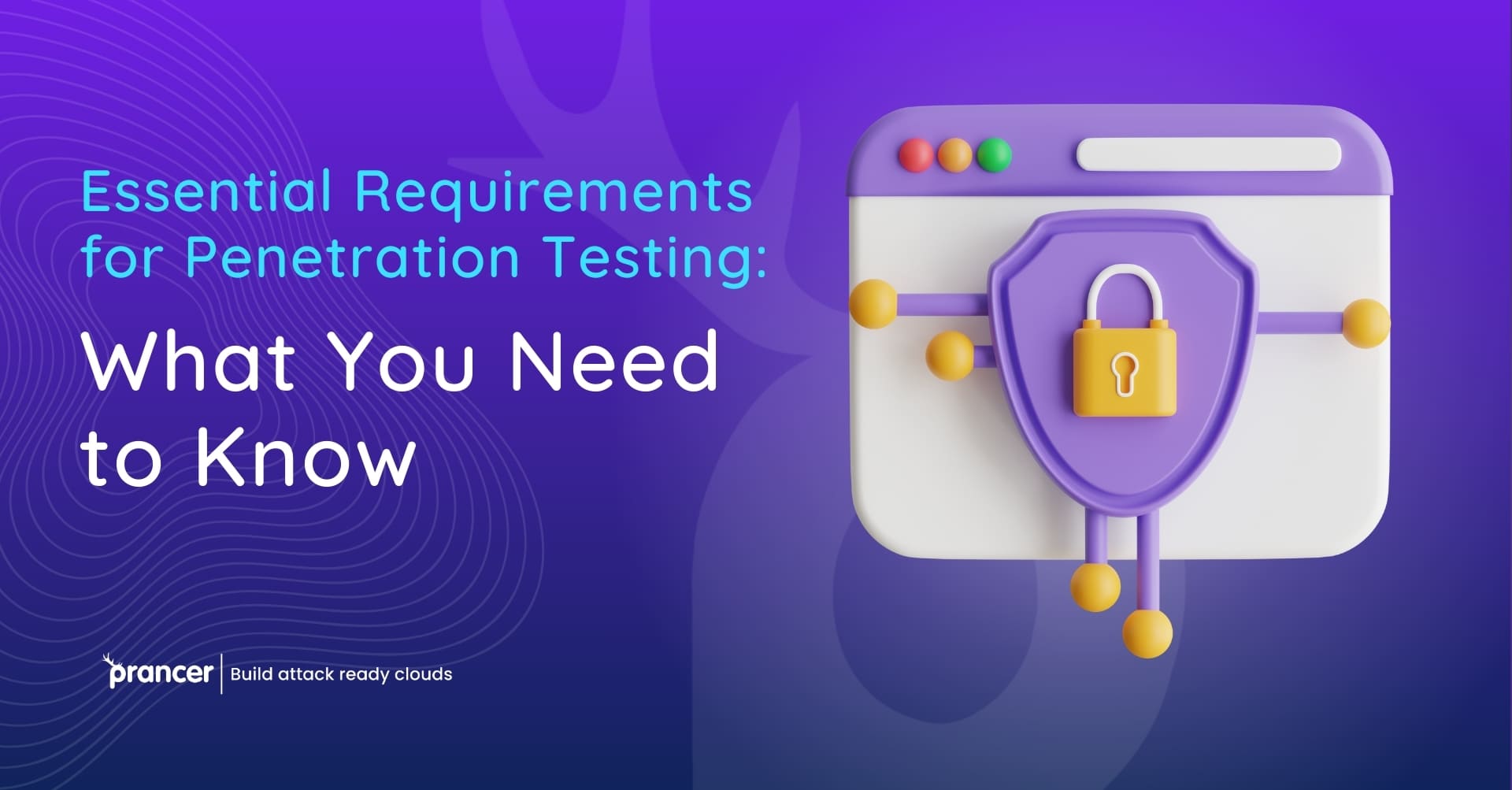

Today it is critical to protect organizational information from leakage and cybercriminals’ attacks. One of the critical components of this security is known as penetration testing, or pen testing. This article gives an insight on the pen testing requirements with emphasis on the automated pen testing and how Prancer assists in the same.
Pen testing requirements are the cornerstones of any strong defense against cyber threats. But what are these requirements in detail and why are they very essential? Let’s dive in.
Pen testing requirements are the guidelines that must be met to conduct an effective pen test.
Essentials and guidelines are requirements that define the ways and means of how pen testing should be conducted. These requirements help make the testing complete, efficient, and as per the software testing world’s policies.
If there are no sufficient pen testing requirements, then organizations are exposed to different cyber threats. These requirements assist in detecting probable security vulnerabilities that can be exploited by the attackers.
Automated penetration testing is one of the critical components of the contemporary approaches to cybersecurity. Thus, the application of automated tools will help to quickly detect weak points and react to them correspondingly. This approach not only saves time but sources an effective analysis as compared to the one undertaken separately.
Automated penetration testing offers several benefits, including Automated penetration testing offers several benefits, including:
The approach Prancer to Pen Testing adopted was efficient and precise, but it had some limitations.
Therefore, Prancer can be specifically distinguished in the context of cybersecurity with its fresh perspectives on pen testing. Due to the application of innovative and essential for pen testing technologies, and the understanding of the main needs of customers, Prancer offers the highest quality services.
The penetration testing solutions that are provided by Prancer are fully automated to provide detailed security tests. These solutions interface with the existing systems, give real time data and provide recommendations.
Establishing pen testing requirements involves several steps, including Establishing pen testing requirements involves several steps, including:
Identify which assets are required to be tested for impairment. This refers to all the physical equipment and network, systems and application software, and communication links.
First, you must describe the penetration test’s objectives. What specific objectives do you have? This will depend on the identification of specific objectives that will help in testing.
Identify the parameters of the test. What areas will be included or be outside the scope of the service? This step helps to make the testing as directed and assessable as possible.
Choose right tools and methods for the testing. Special emphasis is to be put on the automated penetration testing tools in this case.
Pen testing is very strategic and is done in several stages. Here are the key steps:Here are the key steps:
Prepare a full plan that indicates when testing will occur, who will perform the testing, and what tools and technologies shall be used.
Perform the penetration test based on the set schedule. Integrate automated penetration testing tools in the testing process to increase efficiency and proper testing.
One must assess the results of the test to know the weak points of the network. Sort these vulnerabilities according to the seriousness of the effect they may cause.
It is necessary to compile a detailed report with all the findings pointing out the possible actions for the remediation of the situation.
Introduce the required changes that will help rectify the vulnerabilities noted in the system. It is crucial to check these continually to eliminate any such risk that may occur again.
Like any other process, penetration testing also has its own set of risks. Some common issues include:
Pen testing can be a time-consuming activity that highly qualified personnel and resources must do.
If the boundaries are not set, then the test’s goals can become distorted, which can lead to issues of inefficiency and missing important factors.
Cybersecurity threats are always evolving, and it becomes hard to predict and counter the new threats.
With automated penetration testing tools, one can encounter a high number of false alarms since all alerts need to be confirmed and corrected.
Therefore, the knowledge of pen testing requirements is vital to enhance the effectiveness of the organization’s cybersecurity. As established by the automated pentesting tools and future-focused organizations like Prancer, organizations can protect their systems from cyber threats.
